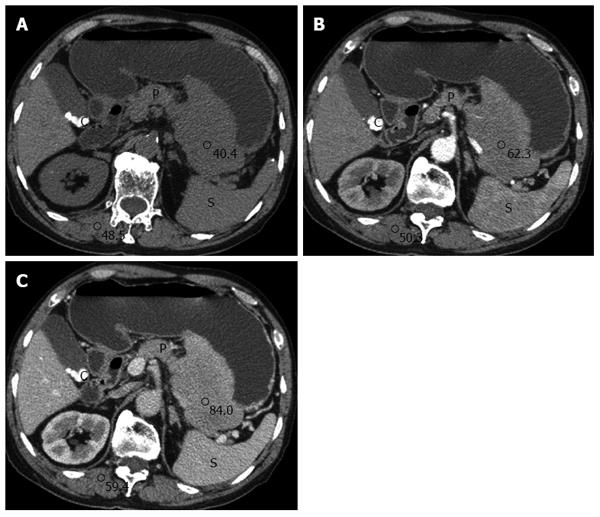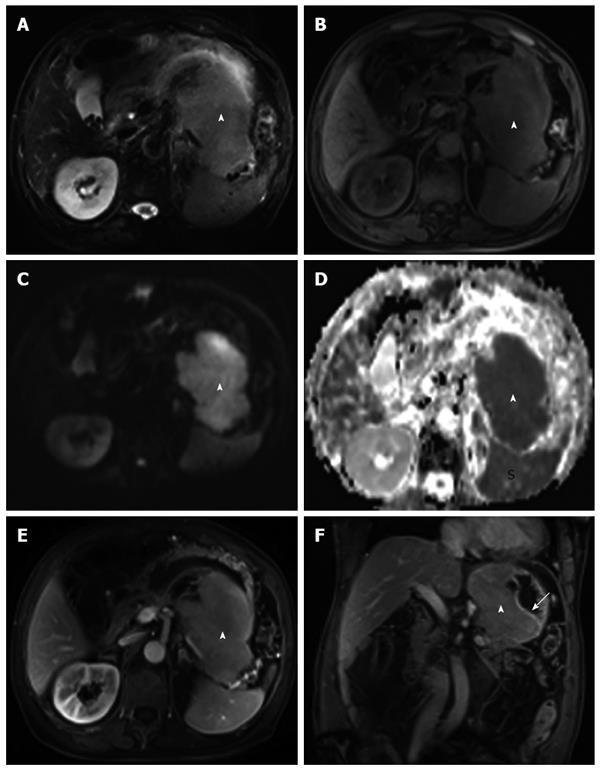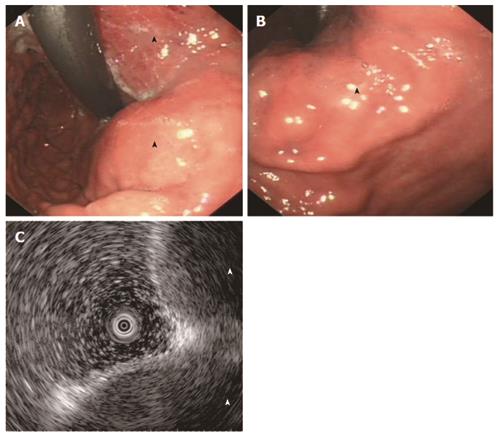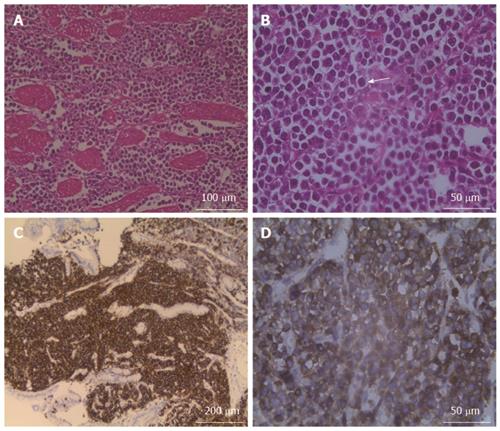Copyright
©2014 Baishideng Publishing Group Inc.
World J Gastroenterol. Aug 7, 2014; 20(29): 10202-10207
Published online Aug 7, 2014. doi: 10.3748/wjg.v20.i29.10202
Published online Aug 7, 2014. doi: 10.3748/wjg.v20.i29.10202
Figure 1 Axial computed tomography image.
A well-circumscribed extraluminal mass with homogeneous iso-attenuation in the posterior side of the gastric midbody (A). The mass appears as a mild enhancement on the arterial phase and a moderate enhancement on the portal phase (B and C). S: Spleen, P: Pancreas, C: Cholelithiasis.
Figure 2 Magnetic resonance imaging.
The lesion (arrowhead) was homogeneous and iso-hyperintense on T2-weighted images (A), iso-hypointense on T1-weighted images (T1WI) (B), clearly hyperintense on diffusion-weighted imaging (C) and hypointense on the apparent diffusion coefficient map (D). The mass (arrowhead) under the hyperintense gastric mucosa (arrow) was gradual and homogeneous for enhancement at 60 s (E) and 190 s (F) after gadolinium injection, as revealed by transverse and coronal T1WI. S: Spleen.
Figure 3 Endoscopy.
Endoscopy revealed irregular bulging (arrowhead) from the fundus to the posterior side of the midbody (A and B), and endosonography indicated effacement of the normal structure and a low echogenic mass (arrowhead) in the gastric wall (C).
Figure 4 Microscopic examination.
Microscopic examination confirmed that plasma cells had diffusely infiltrated the muscular layer of the stomach (A), and some of these cells contained large nuclei with very prominent centrally located nucleoli (arrow) (B). The immunohistochemical examination disclosed that the tumor cells were positive for CD38 (C) and CD138 (D).
- Citation: Zhao ZH, Yang JF, Wang JD, Wei JG, Liu F, Wang BY. Imaging findings of primary gastric plasmacytoma: A case report. World J Gastroenterol 2014; 20(29): 10202-10207
- URL: https://www.wjgnet.com/1007-9327/full/v20/i29/10202.htm
- DOI: https://dx.doi.org/10.3748/wjg.v20.i29.10202












